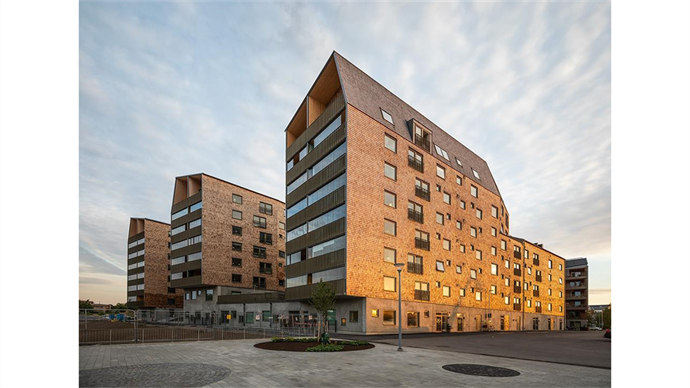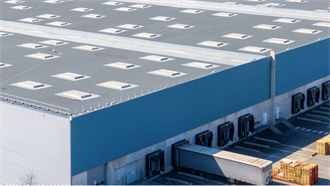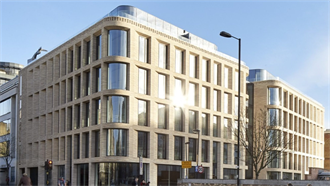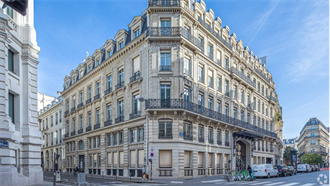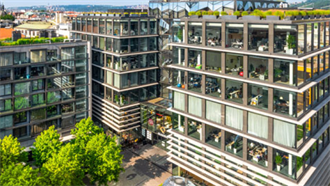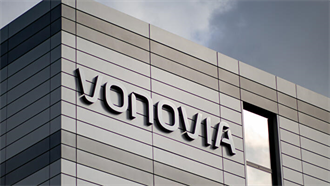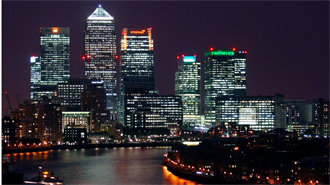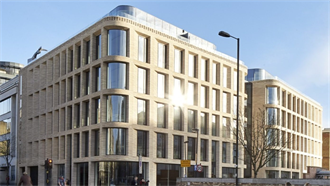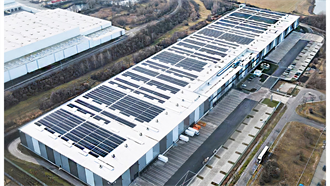The wider use of mass timber in real estate is not just a trend, but a structural shift towards more sustainable and efficient construction. Cromwell Property Group’s Alex Dunn discusses its benefits.
It is not surprising that timber has always been a fundamental resource and building material globally. It is the only abundantly available, easily workable material capable of being stretched or extended, with good compression and bending strength combined with a relatively low weight. It is also entirely renewable. In that respect, it has no competitors.
From the earliest periods of human history, timber was utilised in the construction of temporary shelters by nomadic societies. The ancient civilisations of Greece and Rome recognised the value of timber, using it in the construction of larger infrastructure, including bridges and public buildings. However, the industrial revolution brought about a significant shift. Coal replaced timber as the primary source of fuel, enabling the mass production of iron and steel which gradually replaced timber in construction.
Now we are going full circle. The real estate industry is experiencing a shift towards mass timber, which is emerging as a compelling alternative to traditional steel and concrete-based materials due to several societal developments.
Drivers of mass timber adoption
Sustainability
Estimates suggest that replacing steel or concrete with mass timber could result in a 73% reduction in embodied carbon1. Buildings constructed with timber mitigate carbon emissions in two ways: firstly, trees capture carbon as they grow and this is locked into the building structure over its lifetime; secondly, the carbon used to manufacture mass timber is significantly less than in steel and concrete. To provide some perspective, to build a city with as much floor space as Manhattan would remove around 25-40m tonnes of carbon dioxide, offsetting the equivalent carbon dioxide produced by 8.6bn electric cars in a year
Circular economy
Timber is a bio-based material and presents a partial solution for transitioning to a circular economy. Harvesting mature trees for the use of mass timber construction and replacing them with tree saplings in a sustainably managed fashion provides a mutually beneficial form of carbon removal and construction practice. Timber buildings can also be designed for disassembly and reuse at the end of their lifecycle.
Health and wellbeing
A growing emphasis on health and wellbeing has boosted demand for biophilic designs. The body of emerging evidence to support the direct health benefits from exposure to timber in interior spaces is compelling. Recent studies have shown biophilic workplace design can increase employee health and wellbeing by 13% and employee productivity by up to 8%
Automation
Mass timber components are prefabricated, meaning the material is manufactured offsite before being transported to a building’s location. The evolution and increased adoption of automation and digitalisation has increased the speed and accuracy of the design and manufacture processing. With fully automated mass timber factories coming online, production capacity will rise and prices will fall, making mass timber even more financially competitive.
Densification
Mass timber is a lightweight material, which enables it to be manufactured on smaller sites unsuitable for heavy construction or pile foundations. The light weight of timber also allows for the addition of extra floors to existing buildings, adding valuable floorspace in already densely developed areas. Given these multiple drivers, it is clear why the adoption of mass timber buildings is increasing year on year. As well as flagship buildings, there are also examples of large-scale mass timber developments globally in places such as Toronto, Copenhagen, and Bergen, which have all announced the development of entire neighbourhoods using mass timber.
Developments across all sectors
While most timber buildings tend to be office or living assets, the many benefits listed above have led architects, developers, and occupiers to consider opportunities in other sectors. In logistics, for example, the desire for more sustainable developments means warehouses are now being constructed using mass timber. Typical modern logistics developments comprise wide-span steel warehouses with supporting metal decking enclosed by tilt-up concrete panels. While this design is economical, the carbon footprint it creates is sizeable.
In October 2023, fashion company Bestseller and Henning Larsen, an architecture studio, unveiled the concept design for a new 155,000 m² logistics centre in the Netherlands. Once completed, it will be the largest mass timber logistics building in Europe. The architect highlighted the health and wellbeing benefits of mass timber in creating a workplace that is both visually appealing and healthy for the 600 employees who will work there.
In the US, Southfield 4 is a 15,000 m² logistics unit in Dallas. Affinius Capital, the developer, adopted a hybrid approach using 50-foot-high Cross-Laminated Timber (CLT) panels, which were then covered with insulated metal panels, rather than concrete, for the external walls. Boston-based architect SGA has announced plans to develop two mass timber life science and research development buildings. Both buildings will be developed in an urban area within Boston, with SGA highlighting the benefits that mass timber will bring to the site – which will be key in attracting the best talent.
Data centres are notorious for their high energy usage and consequent carbon footprint, which makes it difficult for investors to comply with sustainability objectives. The ability to reduce the carbon footprint of data centres by using mass timber to construct is therefore increasingly appealing to operators looking to improve their green credentials.
Vertiv, a data centre infrastructure provider, has announced a prefabricated data centre module known as the TimberMod. This uses mass timber instead of steel for structural elements, including the casing. Vertiv claim that the use of mass timber will have a lower carbon footprint than the equivalent steel versions of the product. The TimberMod product meets structural requirements for data centres, and is strong enough to resist seismic activity, wind, and structural demands.
Vertiv also highlighted the aesthetic benefits that mass timber brings to data centre architecture. In the UK, football club Forest Green Rovers announced plans to build the world’s first modern football stadium out of mass timber. The club boasts that the 5,000-seat stadium, designed by Zaha Hadid Architects, will be the “most eco-friendly stadium in the world”.
Structural shift
In conclusion, the wider adoption of mass timber in real estate is not just a trend – it is a structural shift towards more sustainable and efficient construction. Growing momentum is evident in all real estate sectors, from living to logistics and even data centres. The benefits of mass timber, such as its carbon storage, health, wellbeing, and aesthetic appeal, are all being recognised and leveraged more than ever.
Historically, stages of human development are often characterised by the primary materials used; some examples being the Bronze Age, the Iron Age, and the Concrete Age. In this context, perhaps the 21st century could be the Mass Timber Age4 – an aesthetic and healthy pathway towards a sustainable, circular economy.
Alex Dunn is research manager at Cromwell Property Group

